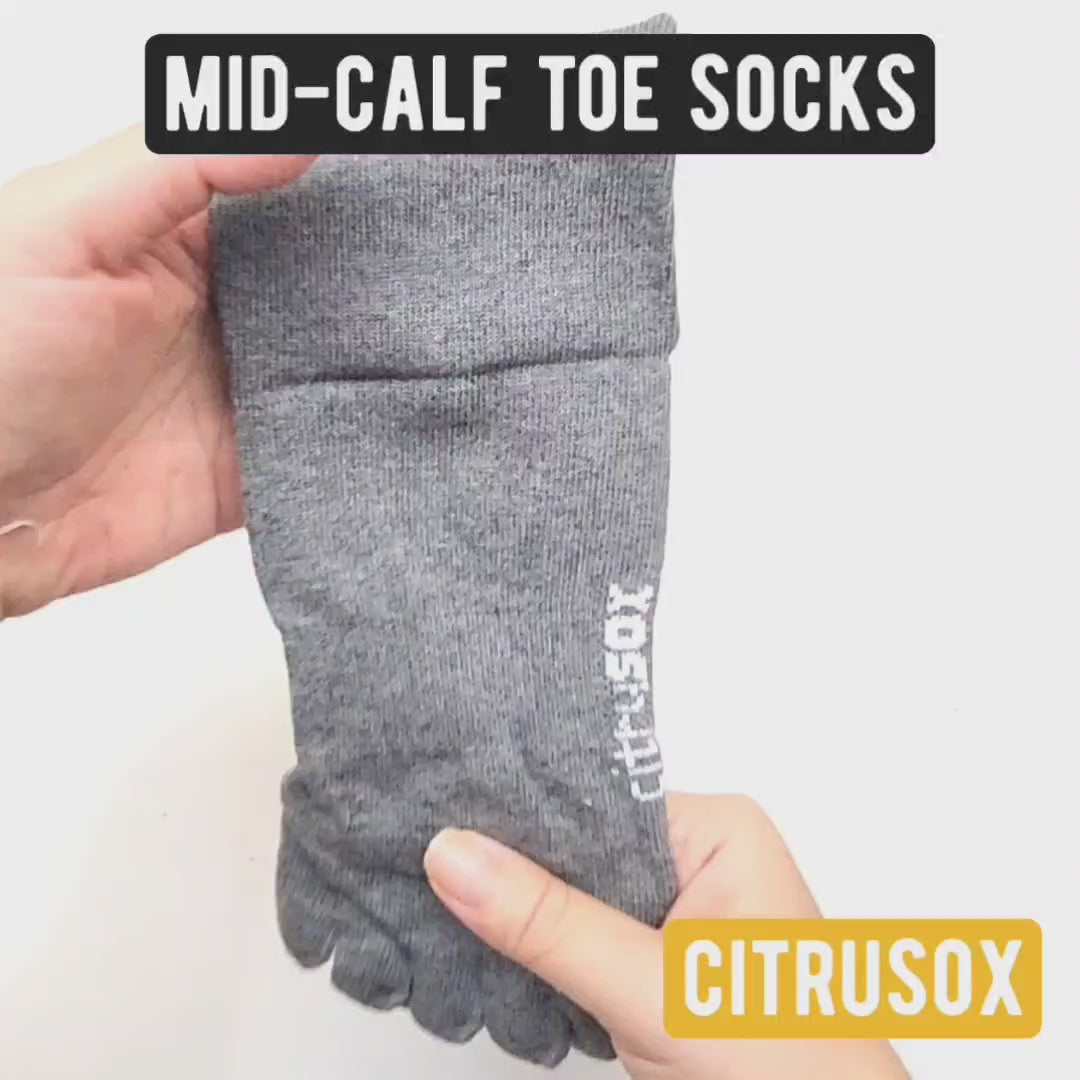All About Compression Socks: Benefits, Levels, and Measuring Tips
Compression socks are more than just a trendy accessory; they’re a powerful tool for improving circulation, reducing swelling, and preventing various health issues. Whether you’re an athlete, a frequent traveler, or someone with specific medical needs, compression socks can make a significant difference in your daily comfort and wellness. But how do you measure the right fit, and what do the different compression levels mean? This guide answers all your questions about compression socks in Singapore and explains why they’re a must-have for your wardrobe.
What is the Purpose of Compression Socks?
Compression socks are designed to apply gentle pressure to your legs, promoting better blood flow from your feet to your heart. This can help:
- Prevent swelling in the legs, ankles, and feet.
- Reduce discomfort and fatigue, especially during long periods of sitting or standing.
- Manage conditions like varicose veins or chronic venous insufficiency.
- Aid recovery for athletes by reducing muscle soreness and improving circulation post-exercise.
In Singapore’s fast-paced lifestyle, these benefits make compression socks a popular choice for both health and convenience.
How to Measure Compression Socks
Choosing the right compression socks starts with proper measurement. Here’s a simple guide:
- Measure your ankle circumference: Wrap a measuring tape around the narrowest part of your ankle.
- Measure your calf circumference: Find the widest part of your calf and take the measurement.
- Measure your leg length: From the bottom of your foot to the bend of your knee for knee-high socks.
Accurate measurements ensure the compression socks provide the right level of pressure for maximum effectiveness.
Understanding the Different Compression Levels
Compression socks come in various levels of pressure, measured in millimeters of mercury (mmHg). Here’s a breakdown of the levels and their uses:
- Mild Compression (8-15 mmHg)
- Ideal for everyday wear and mild swelling.
- Helps relieve tired or achy legs.
- Suitable for travelers or those who sit for extended periods.
- Moderate Compression (15-20 mmHg)
- Commonly used for preventing varicose veins and minor swelling.
- Recommended for pregnant women to improve circulation.
- Great for those with mild medical conditions requiring extra support.
- Firm Compression (20-30 mmHg)
- Used to treat moderate varicose veins and edema.
- Helps manage deep vein thrombosis (DVT) risks.
- Suitable for post-surgery recovery and more intense medical needs.
- Extra Firm Compression (30-40 mmHg)
- Prescribed for severe conditions like lymphedema or chronic venous insufficiency.
- Requires a doctor’s recommendation due to its high level of pressure.
What Can Each Compression Level Treat?
Each compression level is tailored to specific needs:
- 8-15 mmHg: Great for daily use, travel, and mild leg fatigue.
- 15-20 mmHg: Prevents minor vein issues and alleviates discomfort during pregnancy.
- 20-30 mmHg: Treats moderate swelling, varicose veins, and DVT prevention.
-
30-40 mmHg: Used for managing severe medical conditions under professional guidance.
Why Compression Socks Are Essential in Singapore
With Singapore’s active lifestyle and hot climate, leg fatigue and swelling can easily disrupt your day. Compression socks are not only functional but also breathable and stylish, making them a practical addition to your wardrobe.
Find the Best Compression Socks at Citrusox
At Citrusox, we offer a range of high-quality compression socks designed for every need, from mild daily wear to medical-grade support. Our collection is available online and in-store, making it convenient to find the perfect pair.
Shop now at Citrusox and discover why we’re one of the top sock shops in Singapore for compression socks that combine style, comfort, and function.
Conclusion
In conclusion, compression socks offer numerous benefits ranging from improving circulation and reducing swelling to supporting recovery and preventing vein-related conditions. By applying varying levels of pressure, these socks cater to different needs, from mild discomfort to more severe medical conditions. Proper measurement is key to ensuring the effectiveness of the compression. Whether you're looking for comfort during long periods of standing, aiding recovery after exercise, or managing chronic conditions, compression socks are a valuable tool for enhancing leg health. Always consult with a healthcare professional for appropriate compression levels tailored to your needs.
FAQs
Compression socks apply graduated pressure to the legs, helping improve blood circulation, reduce swelling, and prevent conditions like varicose veins or deep vein thrombosis.
Compression socks should be avoided if you have certain conditions such as severe arterial disease, skin infections, or allergies to the material, without consulting a doctor first.
Yes, wearing compression socks can help prevent swelling, improve circulation, and reduce the risk of blood clots when sitting for long periods.
Yes, compression helps reduce swelling by promoting blood flow and preventing fluid buildup in the legs and feet.
Swelling reduction varies, but most people notice improvements after wearing compression socks for a few hours a day.
Compression levels of 20-30 mmHg are most effective for reducing mild to moderate swelling, but higher levels may be necessary for more severe cases.
Compression should be worn for several hours a day, typically during the day while you're active, to see the best results in reducing swelling.
It’s generally not recommended to sleep in compression socks unless specifically advised by a healthcare provider, as your legs need to rest.
Compression promotes blood flow, reduces swelling, alleviates leg pain, supports recovery after exercise, and helps manage varicose veins and edema.
Socks with a compression level of 20-30 mmHg are typically best for managing edema, though your doctor may recommend higher levels for severe cases.
If worn improperly or too tightly, compression socks can cause discomfort, restrict circulation, or irritate the skin. Always follow proper sizing and wear instructions.
Start at your toes and gradually pull the socks up your leg, ensuring they fit snugly but not too tight, avoiding bunching at the top.
Nurses often wear compression socks to reduce leg fatigue, improve circulation, and prevent swelling from long hours of standing.
Yes, you can wear compression socks all day, especially if you're standing or sitting for extended periods, but they should be removed at night unless directed otherwise by a healthcare professional.
Individuals with severe arterial disease, skin infections, or any condition where increased pressure could worsen circulation should avoid leg compression machines.
Compression socks aid healing by improving circulation, which helps reduce inflammation, promote fluid movement, and enhance nutrient delivery to tissues.
The type depends on your condition: for general fatigue or mild swelling, 8-15 mmHg is sufficient, but for varicose veins or chronic conditions, 20-30 mmHg may be needed.
Yes, elevating your legs while wearing compression socks can enhance their effectiveness by aiding fluid drainage and further reducing swelling.
Compression socks generally do not affect heart rate, but they may assist with circulation, which can indirectly support heart health.
Typically, compression socks are not worn at night unless advised by a doctor, as they are most effective when you are upright and active.
If your socks cause discomfort, pain, or leave marks on your skin, they may be too tight and should be adjusted or replaced with a proper size.
Generally, compression socks are safe for people with high blood pressure, but it’s best to consult a doctor to ensure there are no complications.
Wearing ill-fitting or too-tight compression socks can cause skin irritation, discomfort, and reduced circulation, so proper fit and use are crucial.
Roll the stocking down to the toe, slip your foot in, and carefully pull it up your leg, making sure it’s smooth and fits snugly without bunching.
Yes, wearing compression socks during long flights can help prevent swelling, improve circulation, and reduce the risk of deep vein thrombosis (DVT).















